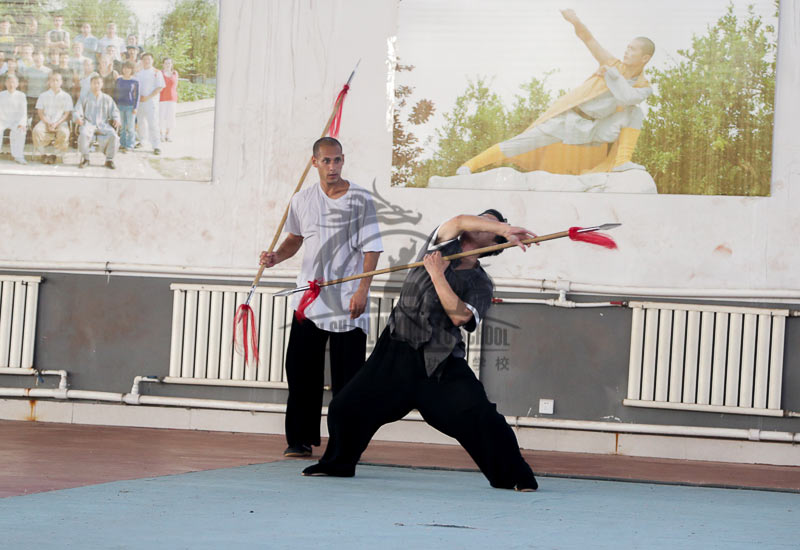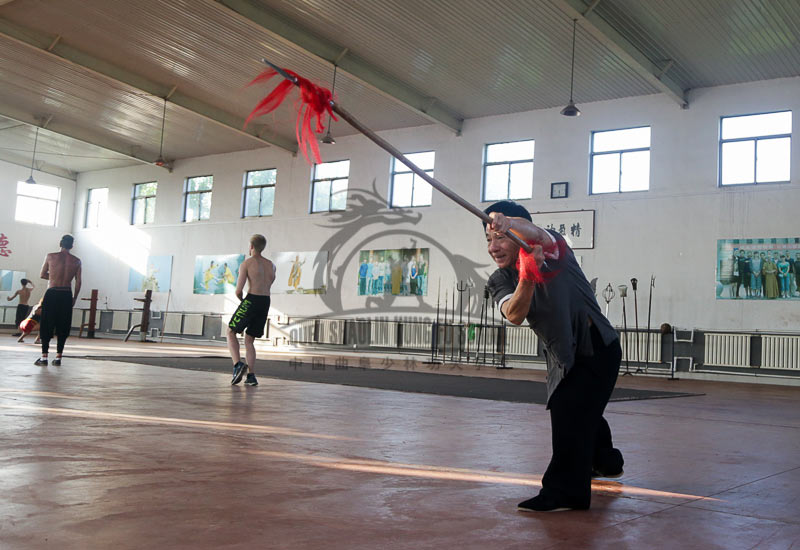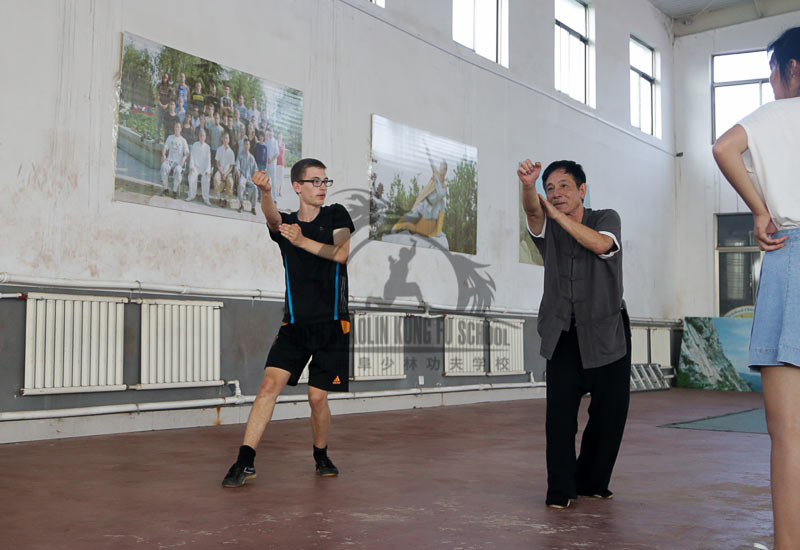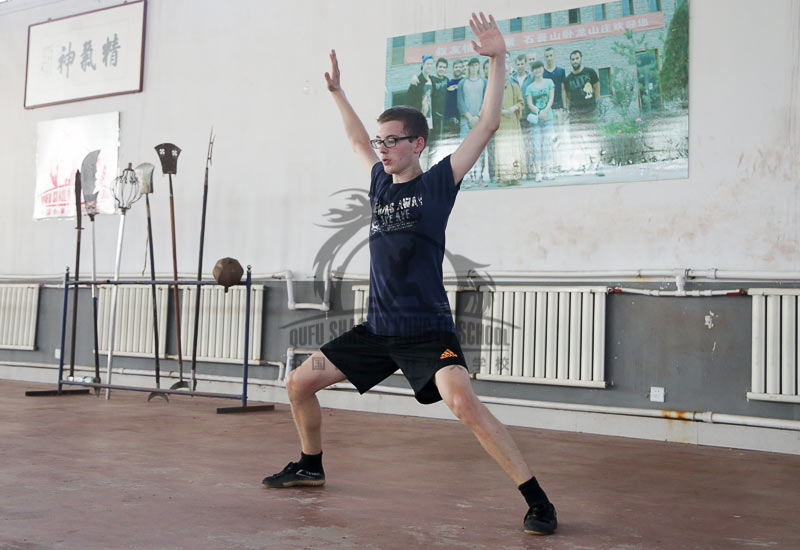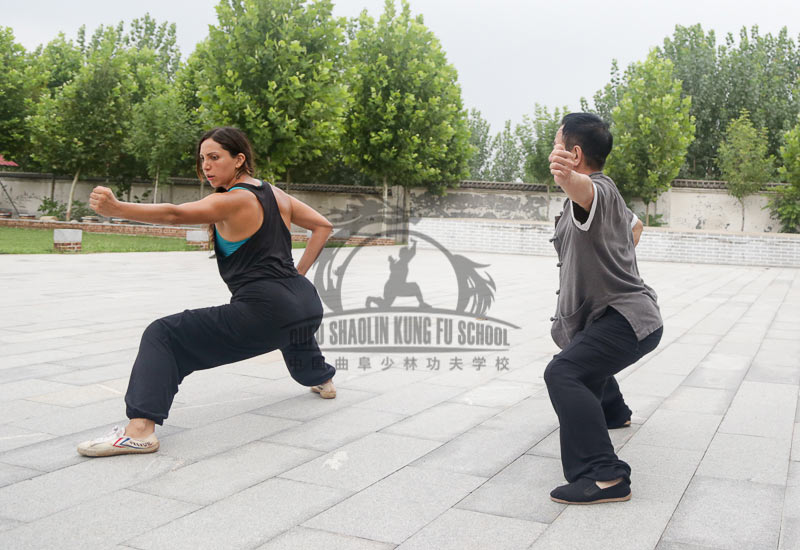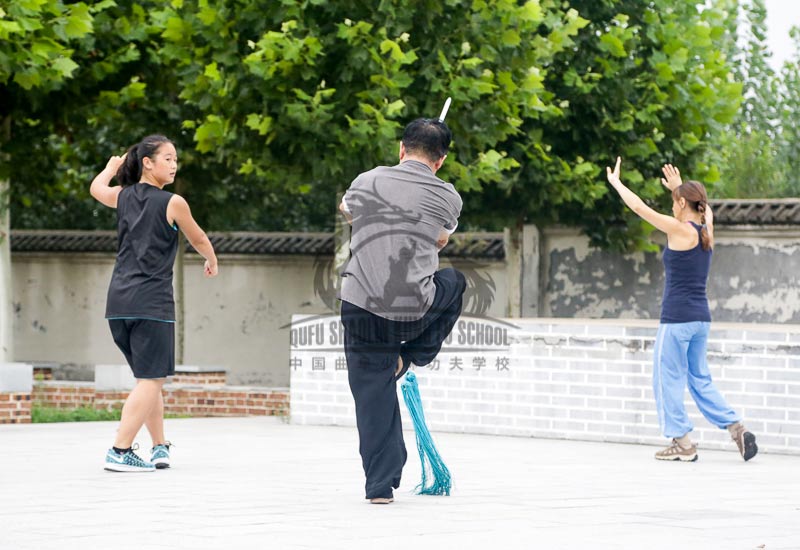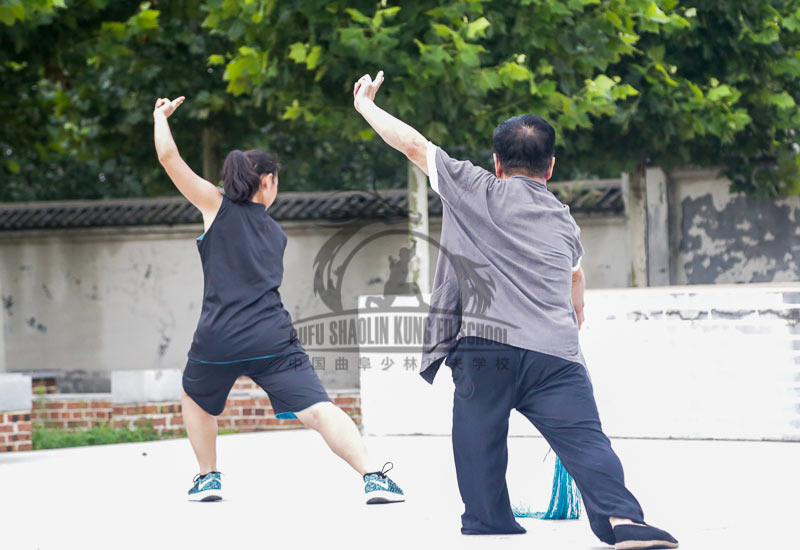MASTER
八极
Ba Ji Quan
Baji 八极,Qufu Shaolin Kung Fu School,Baji Quan, a school of traditional Chinese Marital Arts that features explosive, short range power, was also known as rake fist due to the fist being held loosely and slightly open when not striking...
BIOGRAPHY:
Baji Quan, a school of traditional Chinese Marital Arts that features explosive, short range power, was also known as "rake fist" due to the fist being held loosely and slightly open when not striking, resembling a rake and the art involving many downward strike moves, like a rake's movement in the field. The name was considered to sound rather crude in its native tongue and so was changed to Baji Quan. The term baji, which comes from the oldest book in China, signifies “an extension of all directions" In this case, it means “including everything" or “the universe." 'Ba' (Chinese for eight) denotes the eight major points of the body: head, shoulders, elbows, hands, buttocks, kua, knees, and feet and 'Ji' (polar) is extended in the eight polar directions.
Bajiquan is characterized by direct, culminating and powerful fast strikes that will render an opponent unable to continue and is used in close combat, giving attention to elbow, knee, shoulder and hip strikes. When blocking an attack or nearing an opponent, Bajiquan techniques emphasize striking major points of vulnerability, the thorax (trunk of the body), the legs and neck.
The major purpose of Ba Ji training is to develop ultimate snapping power. After gaining this type of power, some very efficient techniques can be performed or applied.
Six Major Characteristic Powers:
1. Sinking (Xia Chen or Chen Zhui)
2. Thrusting (Chong)
3. Extending (Cheng)
4. Entangling (Chan)
5. Crossing (Shi Zi)
6. Explosive and short (Cun)
The six big ways of opening door or Liu Da Kai: 'the most important practices of Baji'
1. Ding: using the fist, elbow or shoulder to push forward and upward.
2. Bao: putting arms together as if hugging someone. It is usually followed by chop (Pi).
3. Ti: elevating the knee to hit the thigh of the opponent, or elevating the foot to hit the shin of the opponent etc.
4. Dan: using a single move.
5. Kua: using the hip.
6. Chan: entanglement with rotation around the wrist, elbow and shoulder
Stepping and Body Methods:
Footwork in Baji Quan has three special features: Zhen Jiao, Nian Bu and Chuang Bu. These striking techniques relate to ancient Chinese medicine, which states that all parts of the body are connected, either physically or spiritually.
Open Hand Forms and Weapons:
The forms of Baji are divided into Fist (non-weapon) and Weapon forms. There are 20 fist forms, which include 12 Baji Small Structure Fists, Baji Black Tiger Fist, Baji Dan Zhai, Baji Dan Da/Dui Da, Baji Luo Han Gong, and Baji Si Lang Kuan. There are eight weapons forms, including Liu He Da Qiang (spear), Liu He Hua Qiang (spear), Chun Yang Jian (sword), San Yin Dao (sabre), Xing Zhe Bang (staff), Pudao, and Chun Qiu Da Dao (a long two-handed heavy blade, used by Generals sitting on their horses).
Some of Baji's forms:
Black Tiger Fist, Small Frame 4th Road, Single Plucking, Small Frame 5th Road, Small Frame 3rd Road, Small Frame 6th Road, LoHan (Buddha's Disciple) Work, Small Frame 1st Road, Small Frame 2nd Road, Six Big Openings- Liu Da Kai, Pu Dao Plain Knife, Spring Autumn Big Knife, 6 Harmony Big Spear, Single Strike, Railing Hand Partner Set- Fu Shou, Si Lang Kuan, Pure Yang Sword, Raise the Willow Saber, Travelling Staff, Six Harmony Spear.
Bajiquan is characterized by direct, culminating and powerful fast strikes that will render an opponent unable to continue and is used in close combat, giving attention to elbow, knee, shoulder and hip strikes. When blocking an attack or nearing an opponent, Bajiquan techniques emphasize striking major points of vulnerability, the thorax (trunk of the body), the legs and neck.
The major purpose of Ba Ji training is to develop ultimate snapping power. After gaining this type of power, some very efficient techniques can be performed or applied.
Six Major Characteristic Powers:
1. Sinking (Xia Chen or Chen Zhui)
2. Thrusting (Chong)
3. Extending (Cheng)
4. Entangling (Chan)
5. Crossing (Shi Zi)
6. Explosive and short (Cun)
The six big ways of opening door or Liu Da Kai: 'the most important practices of Baji'
1. Ding: using the fist, elbow or shoulder to push forward and upward.
2. Bao: putting arms together as if hugging someone. It is usually followed by chop (Pi).
3. Ti: elevating the knee to hit the thigh of the opponent, or elevating the foot to hit the shin of the opponent etc.
4. Dan: using a single move.
5. Kua: using the hip.
6. Chan: entanglement with rotation around the wrist, elbow and shoulder
Stepping and Body Methods:
Footwork in Baji Quan has three special features: Zhen Jiao, Nian Bu and Chuang Bu. These striking techniques relate to ancient Chinese medicine, which states that all parts of the body are connected, either physically or spiritually.
Open Hand Forms and Weapons:
The forms of Baji are divided into Fist (non-weapon) and Weapon forms. There are 20 fist forms, which include 12 Baji Small Structure Fists, Baji Black Tiger Fist, Baji Dan Zhai, Baji Dan Da/Dui Da, Baji Luo Han Gong, and Baji Si Lang Kuan. There are eight weapons forms, including Liu He Da Qiang (spear), Liu He Hua Qiang (spear), Chun Yang Jian (sword), San Yin Dao (sabre), Xing Zhe Bang (staff), Pudao, and Chun Qiu Da Dao (a long two-handed heavy blade, used by Generals sitting on their horses).
Some of Baji's forms:
Black Tiger Fist, Small Frame 4th Road, Single Plucking, Small Frame 5th Road, Small Frame 3rd Road, Small Frame 6th Road, LoHan (Buddha's Disciple) Work, Small Frame 1st Road, Small Frame 2nd Road, Six Big Openings- Liu Da Kai, Pu Dao Plain Knife, Spring Autumn Big Knife, 6 Harmony Big Spear, Single Strike, Railing Hand Partner Set- Fu Shou, Si Lang Kuan, Pure Yang Sword, Raise the Willow Saber, Travelling Staff, Six Harmony Spear.
RELATED KUNG FU STYLES:
PHOTOS:
Share It :
Copyright © 2008-2025 Qufu Shaolin Kung Fu School All Rights Reserved 鲁ICP备09020273号
You can find ours here Terms of Service, our Data protection and our Cookie-Richtlinie
You can find ours here Terms of Service, our Data protection and our Cookie-Richtlinie



